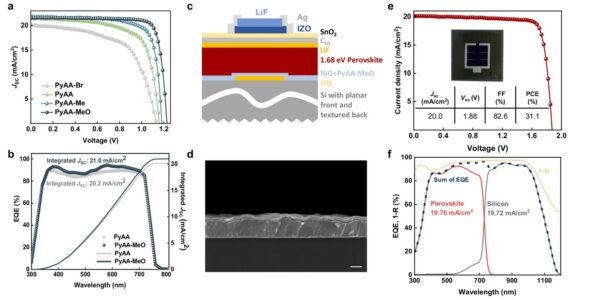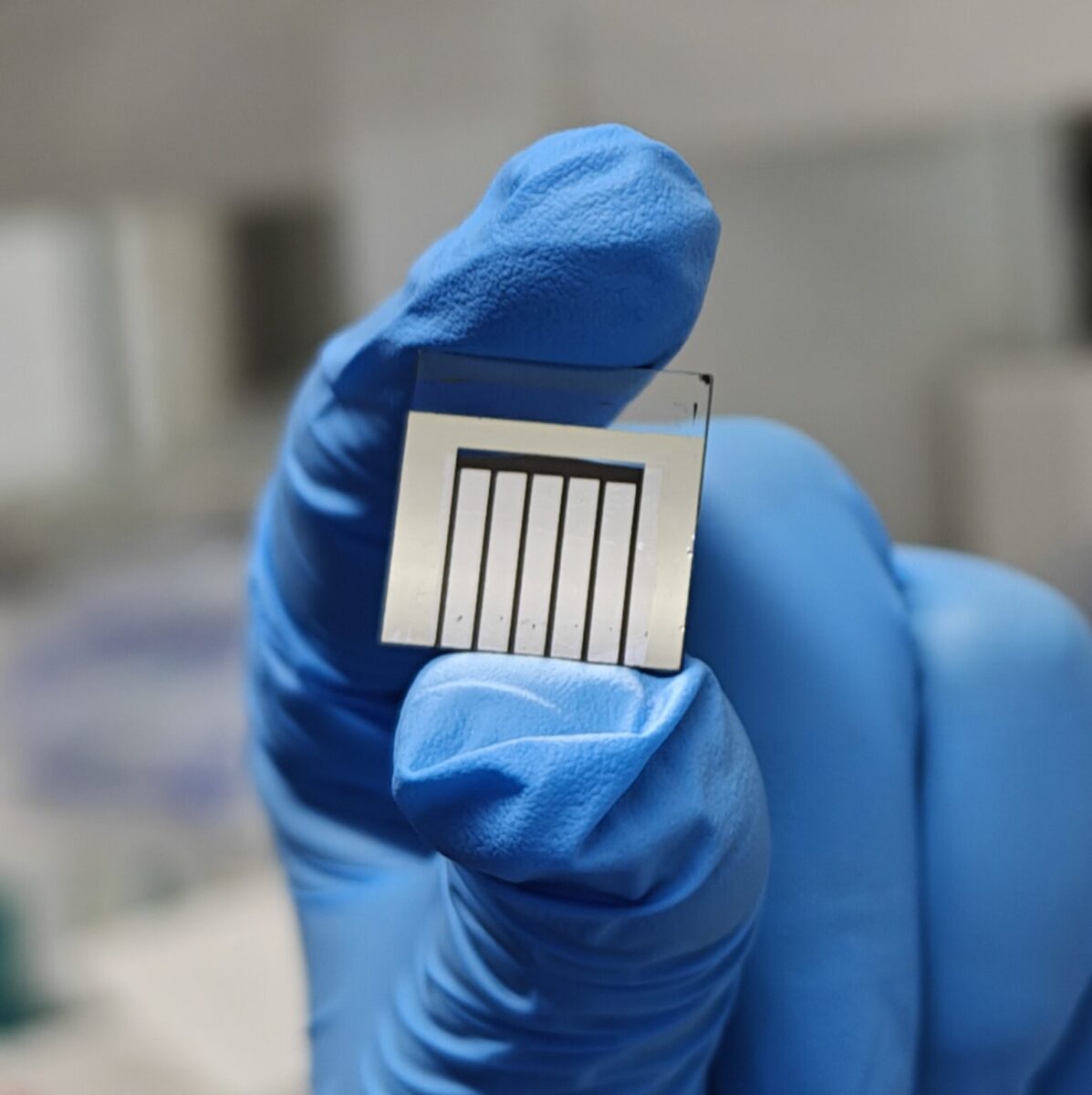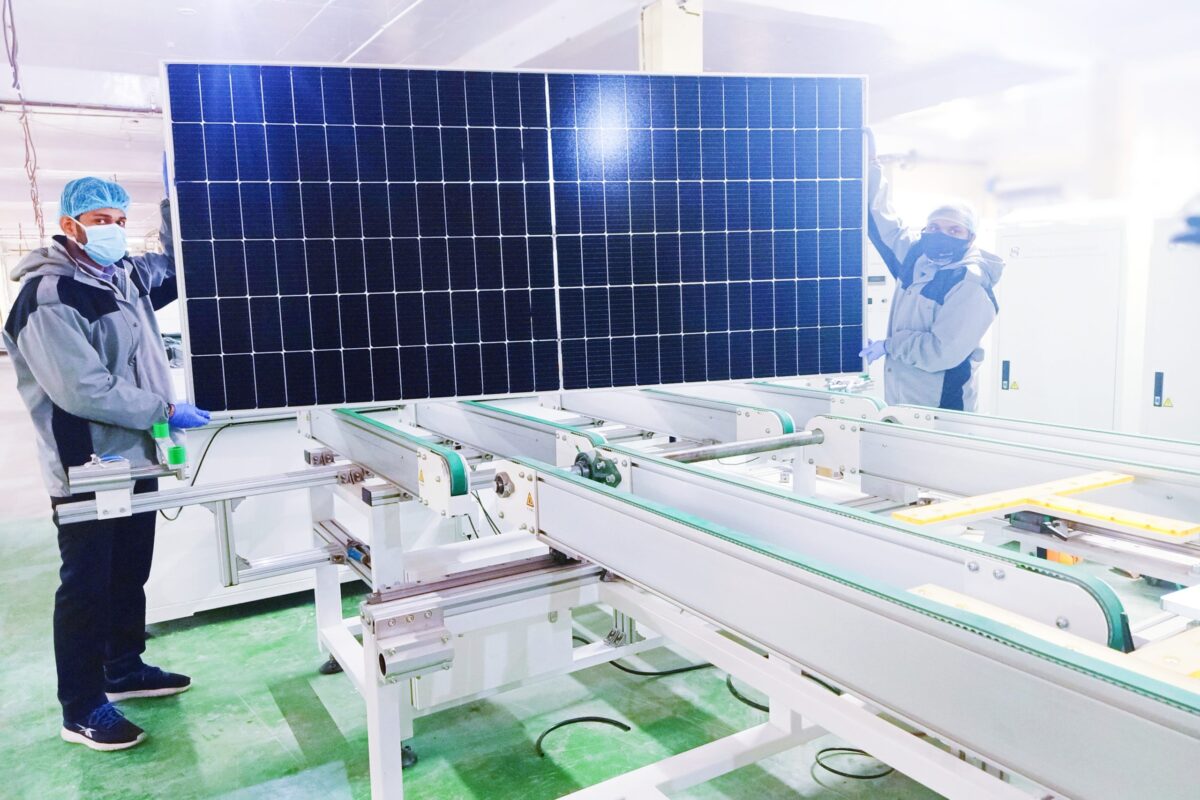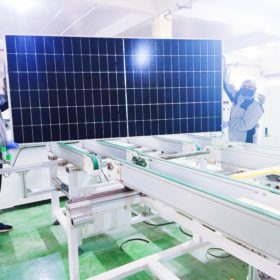A group of researchers led by the Zhejiang University in China has fabricated a perovskite-TOPCon tandem solar cell with a top inverted perovskite cell utilising a self-assembled monolayer (SAM) that can reportedly enhance the cell’s thermal stability.
Inverted perovskite cells have a device structure known as “p-i-n”, in which hole-selective contact p is at the bottom of intrinsic perovskite layer i with electron transport layer n at the top. Conventional halide perovskite cells have the same structure but reversed – a “n-i-p” layout. In n-i-p architecture, the solar cell is illuminated through the electron-transport layer (ETL) side; in the p-i-n structure, it is illuminated through the hole‐transport layer (HTL) surface.
The scientists explained that electron density within the SAMs can be modulated to shift the interfacial energetics between the SAM and perovskite layer, which results in a “more versatile and controlled approach” to optimising energy alignment in the perovskite solar cell, while also having a “negligible” influence on the phase stability of the wide-bandgap perovskite film.
The team built the top perovskite cell with an indium tin oxide (ITO) layer, the SAM, a nickel oxide (NiO) layer, a perovskite absorber with an energy bandgap of 1.68 eV, a lithium fluoride (Lif) layer, an electron transport layer (ETL) based on buckminsterfullerene (C60) and tin oxide (SnO2), a transparent back contact made of indium zinc oxide (IZO), and a silver (Ag) metal contact.

Tested under standard illumination conditions, the top perovskite cell was found to have a power conversion efficiency of 22.8%, an open-circuit voltage of 1.24 V, and a “high” fill factor of 84.3%. It was also found to retain more than 99% of the initial efficiency after 400 h of maximum power point tracking at 60 C.
Using this cell, the researchers built a 1 cm2 tandem device including a standard TOPCon solar cell as a bottom device.
This cell achieved an internally measured efficiency of 31.1% and a certified efficiency of 30.9%, with the Chengdu Institute of Product Quality Inspection Co., Ltd. National Photovoltaic Product Quality Inspection & Testing Center having verified the result.
It also achieved an open-circuit voltage of 1.88 V, and a short-circuit current of 20.0 mA cm−2, and a “high” fill factor of 82.6%.
The researchers claimed these figures demonstrate the reliability and potential application of the inductive effect modification strategy for wide-bandgap perovskite solar cells.
“The results highlight the possibility of the rational design of SAMs by making use of the inductive effect to achieve favored interfacial energetics with wide-bandgap perovskite,” they emphasised. “We believe this strategy is promising in contributing to the commercialisation of perovskite and perovskite-TOPCon tandem solar cells.”
The novel cell concept was presented in the paper “Inductive effects in molecular contacts enable wide-bandgap perovskite cells for efficient perovskite/TOPCon tandems,” which was recently published in nature communications.
In July, other researchers from the Zhejiang University in China announced to have developed for the first time an inverted perovskite solar cell based on a high-entropy hybrid perovskite material that reportedly improves the device’s stability while providing excellent efficiency levels.
This content is protected by copyright and may not be reused. If you want to cooperate with us and would like to reuse some of our content, please contact: editors@pv-magazine.com.









By submitting this form you agree to pv magazine using your data for the purposes of publishing your comment.
Your personal data will only be disclosed or otherwise transmitted to third parties for the purposes of spam filtering or if this is necessary for technical maintenance of the website. Any other transfer to third parties will not take place unless this is justified on the basis of applicable data protection regulations or if pv magazine is legally obliged to do so.
You may revoke this consent at any time with effect for the future, in which case your personal data will be deleted immediately. Otherwise, your data will be deleted if pv magazine has processed your request or the purpose of data storage is fulfilled.
Further information on data privacy can be found in our Data Protection Policy.